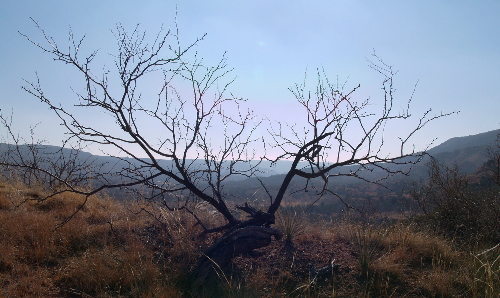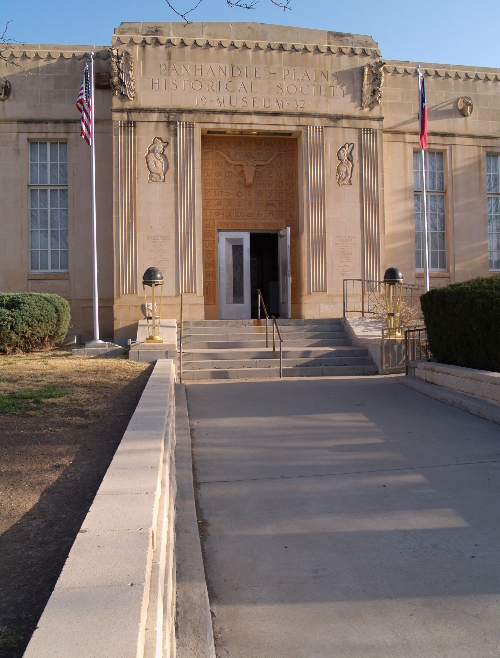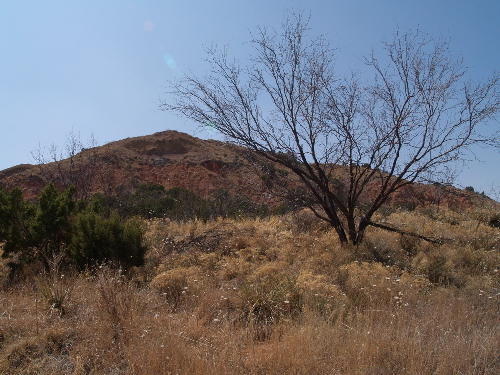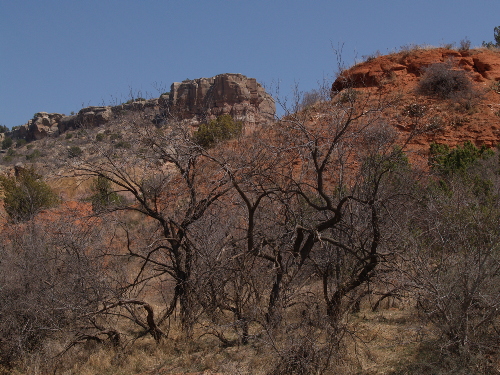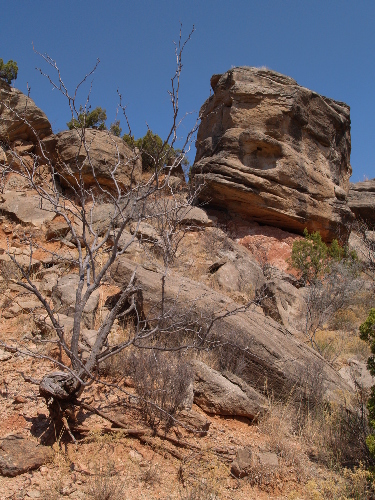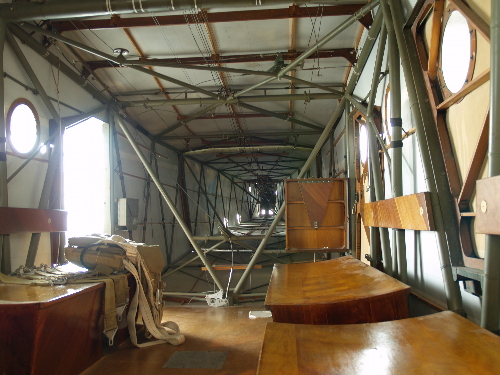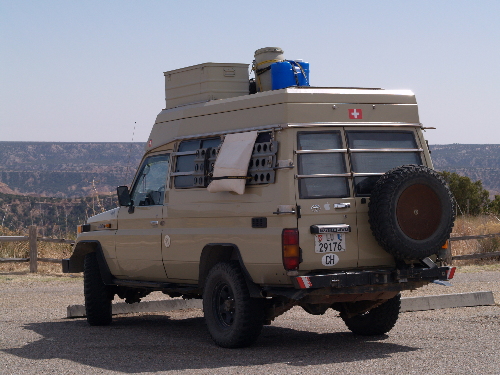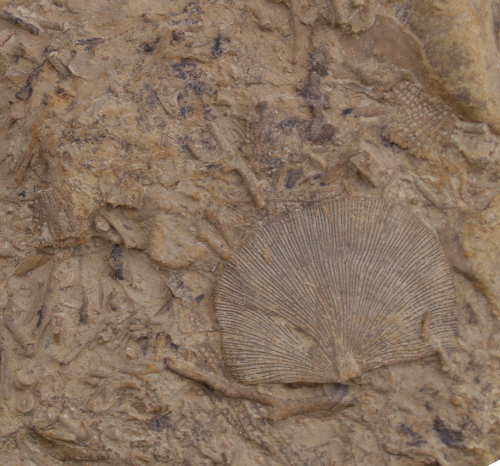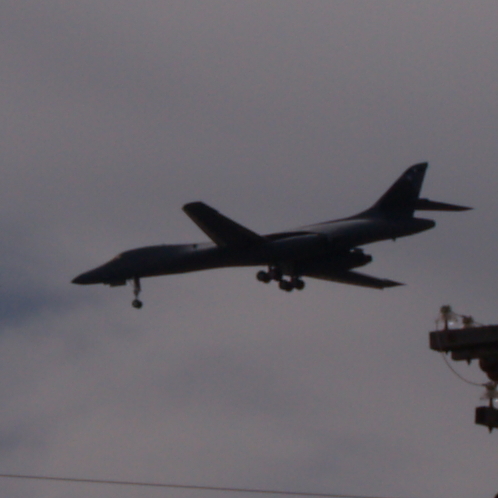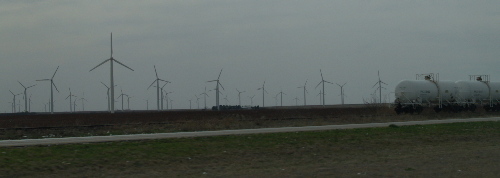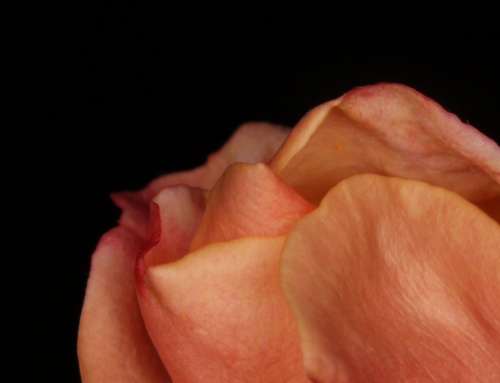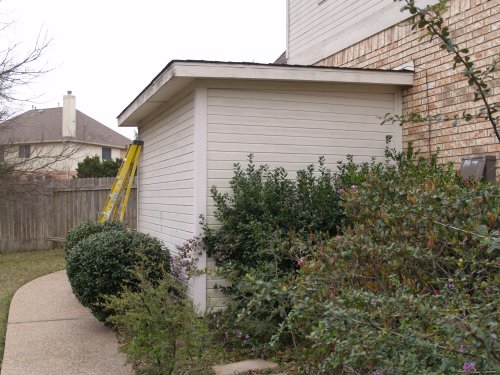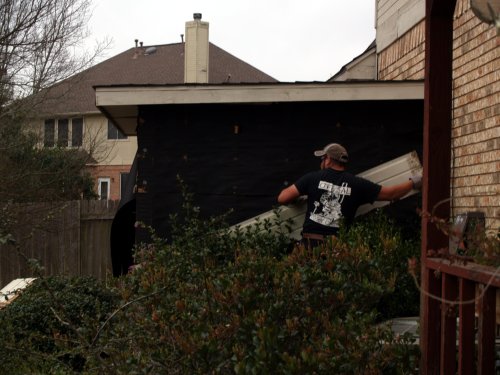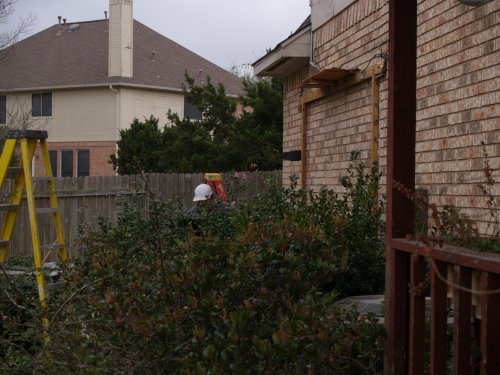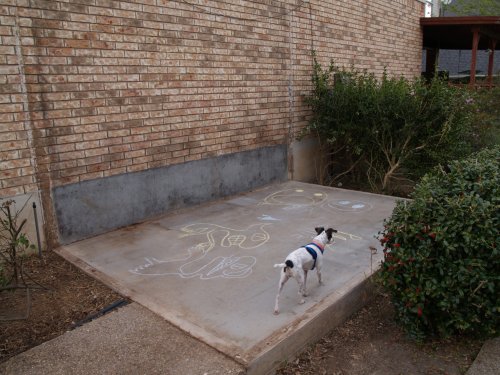We got up moderately early, packed the kids up with breakfast junk from the hotel buffet, and headed out to the park. It was in the low 50’s but it didn’t feel cold; we’re at 3000+ feet up here, and that really seems to affect the perception of air temperature. I had running shorts and a running t-shirt, anticipating (correctly) that I’d be running back from a finished-up crew to the van.
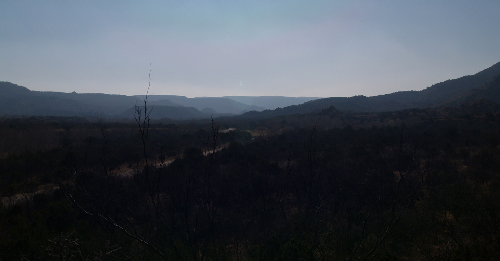
We opted for the “Juniper Cliffside Trail.” The trails on the parks department map are not very clearly described or marked. In this case, we started on one side of the river (the Prairie Dog Fork of the Red), and found we needed to ford the washed-over road crossing to continue. Wet feet. The trail is a multi-use foot-bike-horse trail, and a few squads of bikers – and one of runners – passed us along the way.
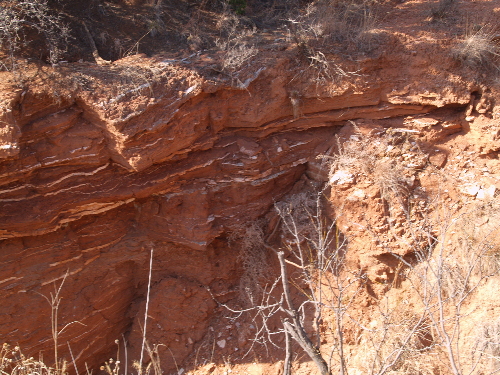
The lower reaches of the canyon are “Quartermaster” formation Permian sediments. The white bands are gypsum, in the form of selenite or alabaster (and something else I can’t remember). Up close the white bands look like masses of brilliant thin crystals all lined up vertically next to each other. The gypsum precipitated out over layers of sediment during dry periods of the late Permian, when the world climate was going bonkers due to the conglomeration of continents into Pangea. As the soil dried, got somewhat re-wetted, and dried again – a lot – the gypsum sort-of filtered out of the sediments and was left as those distinctive white stripes.
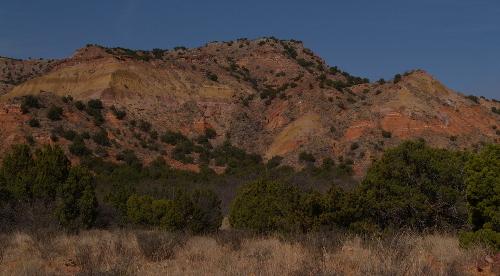
Above the Quartermaster layers are two groups of late Triassic sediments, the Tecovas group and the Trujillo group. Those consist of random shales, conglomerates, and sandstones in a weird variety of colors. In particular, a pale purple and a greenish-yellow layer can be seen all over the place. On the trail (which is almost completely in Quartermaster territory), occasional arroyos have washed down the grey-green, yellow-green, and purple-grey sands and pebbles to mix with the red and white Permian sediments. It’s really cool to see. The water erosion on the cliffsides give a thoroughly Georgia O’Keefe look.
I can’t resist cheap compositions with gnarly dead trees. The place was easy pickings for that sort of stuff today.
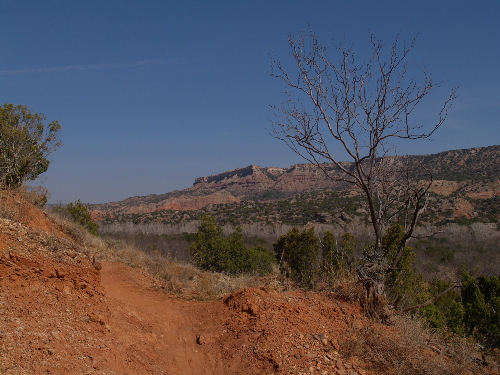
The kids were pretty good about the whole thing. When they’d exhausted their energy, I left the camera bag with Elaine and headed back down the road. About two or three hundred yards out, I heard a couple of panicked-sounding screams of “Mike! Mike!”. I stopped to verify, and then realized I had no choice but to run back. An annoying minivan showed up to mask any further sound as I ran back up the park road as fast as I could (not fast). When the fam came finally into view, they were just strolling along. Pat saw me and came back to tell me that Elaine wondered whether I had the car keys. I expressed dissatisfaction with that motive for a distress call in a way that apparently made Elaine a little upset. I felt bad about that after I found out the effects. It turned out we hadn’t gone that far, because even with my slow running pace it took no time at all to get back to the van, though it had taken two hours to get where we got via the trail.
I sat around the pool watching Allie and Pat “swim” in the pool while Elaine and Christopher returned to the museum. Christopher came back in a couple hours to construct a “replica” of a historic firearm he’d found at the museum. It’s good that he’s satisfied with the most vague topological similarity between his realizations and the actual originals.
We went back to the park in the late afternoon one more time, just to have a look. It’s a really nice park, and with the museum as icing I think it was a nice trip. It’s really far, true, but Canyon is a surprisingly nice little town (compared especially to Lubbock, which had us wondering whether things would keep getting worse as we went north). We ate at a Thai-Laotian (yes, really) place last night, and at the little “Something Different” place today we had a good lunch and a flawless free wireless connection.
